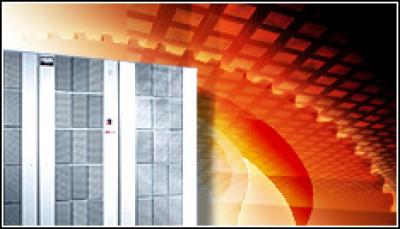Novell Unveils Service-Driven Data Centre Plan

Novell’s new data centre strategy will be centred around the recent launch of its SUSE Linux Enterprise Server 11 operating system
In order to solidify a corporate image in the minds of potential customers, every major enterprise IT systems provider believes it must have an all-inclusive sales and marketing theme or strategy.
Hewlett-Packard has its Adaptive Computing campaign. Sun Microsystems has long had its Open Systems approach. Cisco Systems recently unveiled its Unified Computing strategy.
IBM has had a number of these over the years. “Autonomic” (self-monitoring, self-healing computing) was one in play a few years ago. In 2008 it was Information On Demand. In 2009 it has focused on the IBM Blue Cloud.
Now it’s Novell’s turn. The open-source-oriented operating system company told eWEEK that it is now using “Service-Driven Data Center” as its go-to sales and marketing theme, centered around the March 24 launch of its SUSE Linux Enterprise Server 11 operating system.
Basically, this is an indication to the market that the company is ready to bring the products of companies it has recently acquired — PlateSpin and ManagedObjects — into a corporate data center marketing scheme.
There’s a lot of competition out there; any semblance of organisation will look good to a potential customer.
Data centres by nature provide a service to the enterprises in which they reside. So what’s unique about a “service-driven” data centre?
“In many cases, organisations are already moving toward that [goal],” Novell Director of Product Marketing Richard Whitehead told eWEEK. “Our concept of the service-driven data centre is specifically geared to delivering the services that business users need. It’s all focused around the IT department being a service provider, whether it’s internal to the organisation or external with things like cloud [computing], even though we know cloud is still in its infancy.”
The truly service-driven data center is geared toward providing agility and flexibility while still maintaining control of the data, Whitehead said.
“I often talk to customers about something called ‘shadow IT,’ ” Whitehead said. “An example: The boss gets a new iPhone, goes to IT and tells them, ‘I want to get my email on my iPhone.’ They say, ‘Ah, sorry, we don’t support it.’ The boss says, ‘Oh, that’s interesting; I’m going to call my buddy who put something [a service] on his credit card, and they can synchronise that for me.’
“Next thing you know, you have a shadow IT thing going on, because you’re not providing the service the customer wanted.”
There are three main characteristics of a service-driven data centre, Whitehead said.”No. 1, it must be properly built,” he said. “It must be able to work with multiple operating systems, hypervisors, virtualisation, cloud computing—the whole nine yards. That’s where SUSE Enterprise Linux 11 fits, because it is interoperable with Unix, Windows, VMware, and most other applications and layers.
“The next piece we call ‘Manage.’ This is where our PlateSpin products come in: to leverage all the assets within an organisation, be they hardware, software or whatever. You need a management system that can support that,” he said.
Novell’s PlateSpin Workload Management software uses the virtualisation layer—be it VMware, Citrix or Microsoft—to optimise, balance and protect all servers in the data centre.
The final piece is what Novell calls “Measure,” Whitehead said.
“That involves the recent acquisition of ManagedObjects, where our business service management plays. We feel we have a unique advantage because we are able to work across multiple platforms and hardware types,” he said. “If you can’t measure it, how do you know if you’re delivering the services you need to deliver?”
SLES 11, PlateSpin and ManagedObjects data center components are available now